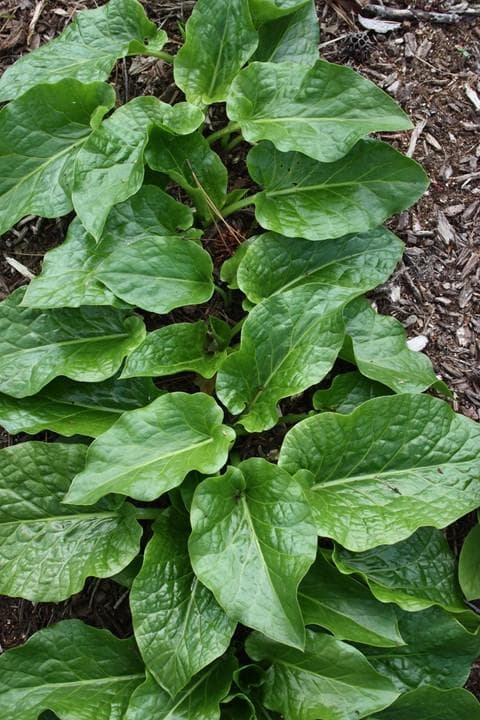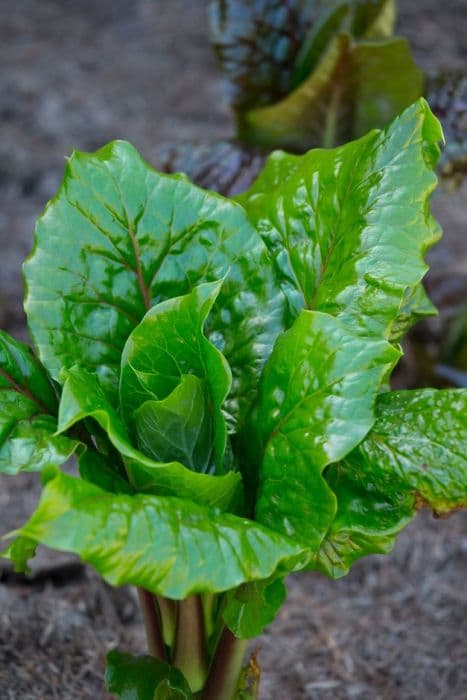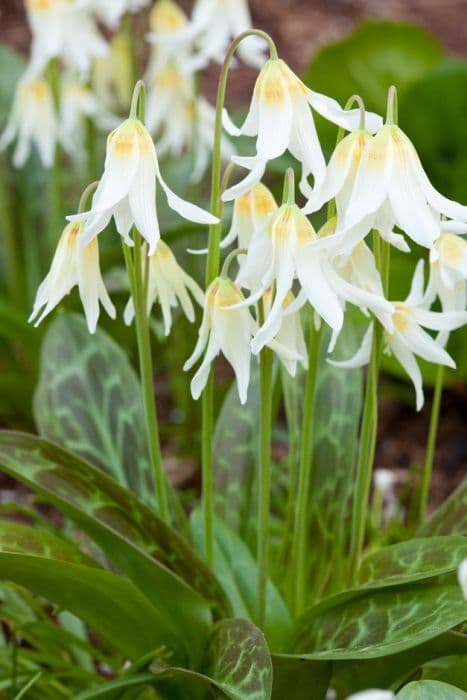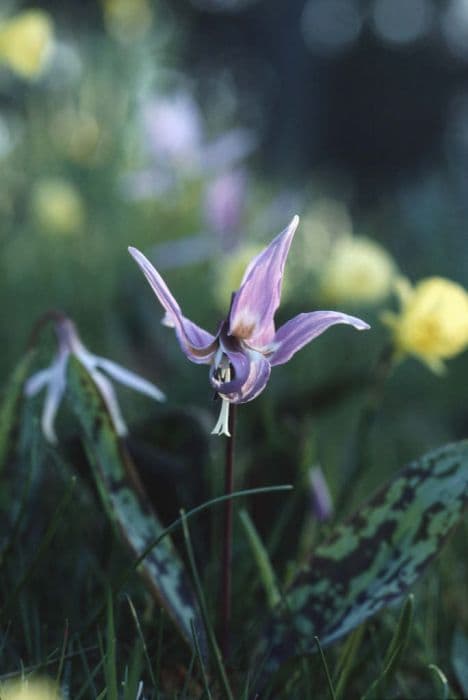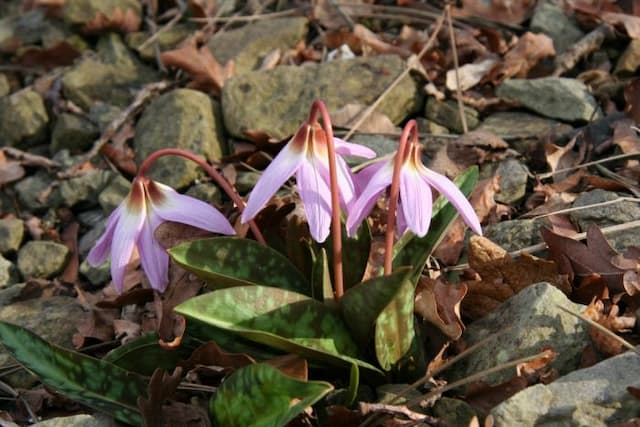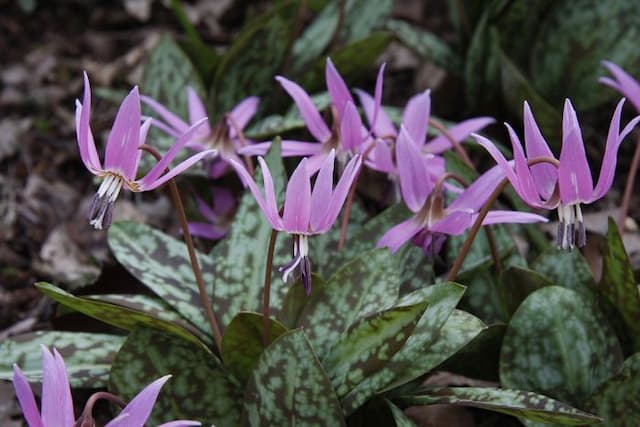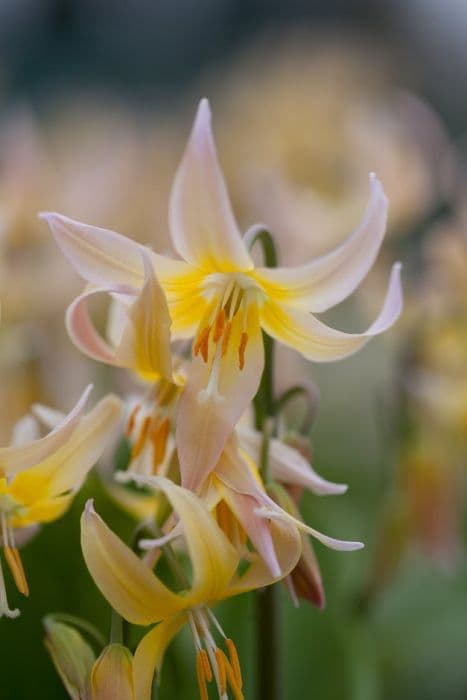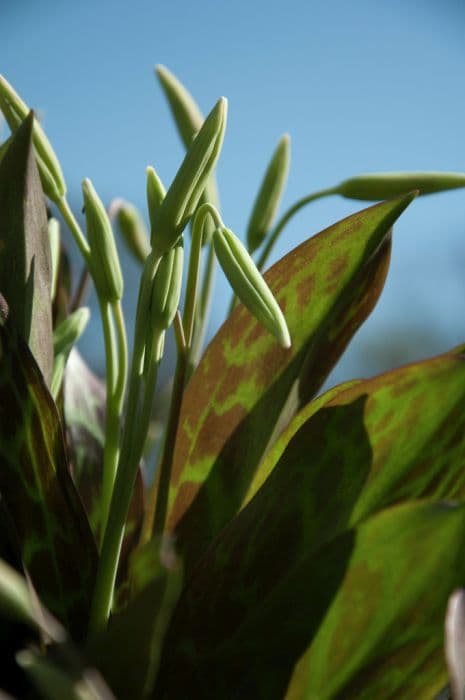Tulip Tulipa 'Burning Heart' (4)

ABOUT
Tulipa 'Burning Heart' is an ornamental flowering plant commonly known as a tulip. This variety showcases a striking appearance with its vibrant, colorful blooms. The flowers have a classic tulip shape, with a rounded base that tapers to a slightly pointed tip, resembling a cup or goblet. The petals exhibit a dramatic color palette, with a fiery blend of red, orange, and yellow hues that intermingle and create the effect of a burning flame. The outer edges of the petals may be fringed or feathered, which adds a soft, intricate texture to the overall look of the flower. Subtle streaks or flames of a contrasting color often accentuate the vivid base color, enhancing the flower’s allure. The leaves are typically a rich green color, elongated and slightly curved, forming an elegant backdrop for the luminous blooms. Tulipa 'Burning Heart' presents an eye-catching display that is characteristic of the beauty and grace found in tulip varieties.
About this plant
 Names
NamesSynonyms
Tulip, Burning Heart Tulip
Common names
Tulipa 'Burning Heart'
 Toxicity
ToxicityTo humans
The plant commonly known as tulip generally has a low level of toxicity to humans. However, if any part of the tulip is ingested, it can potentially cause symptoms of poisoning. These symptoms may include nausea, vomiting, diarrhea, and irritation to the mouth and throat. While serious cases are rare, it is advisable to be cautious and avoid consuming any part of tulip plants.
To pets
The tulip contains compounds that can be toxic to pets, particularly dogs and cats, if ingested. Symptoms of tulip poisoning in pets may include vomiting, diarrhea, drooling, and depression. In severe cases, it can lead to increased heart rate and changes in breathing. The bulb of the tulip is the most toxic part. If you suspect your pet has ingested tulip plant material, it is important to contact a veterinarian promptly.
 Characteristics
CharacteristicsLife cycle
Perennials
Foliage type
Deciduous
Color of leaves
Green
Flower color
Red
Height
1-2 feet (30-60 cm)
Spread
3-6 inches (7-15 cm)
Plant type
Bulb
Hardiness zones
3-8
Native area
Central Asia
Benefits
 General Benefits
General Benefits- Attractive Blooms: Tulipa 'Burning Heart' features eye-catching flowers with unique color patterns that enhance the aesthetic appeal of gardens and landscapes.
- Seasonal Interest: This tulip variety adds a burst of spring color, providing visual interest during its blooming season.
- Pollinator-Friendly: The flowers attract bees and other pollinators, supporting local ecosystems and biodiversity.
- Easy to Grow: Tulipa 'Burning Heart' is known for being easy to cultivate, making it suitable for gardeners of all skill levels.
- Versatility: These tulips are suitable for planting in flower beds, borders, and containers, offering design flexibility for various garden styles.
- Cutting Garden Addition: The flowers are excellent for cutting and can be used in floral arrangements, bringing indoor decoration possibilities.
- Return Yearly: As a perennial, Tulipa 'Burning Heart' can return for several years when conditions are appropriate, providing long-term garden interest.
- Symbolism and Gifting: Tulips are often associated with love and affection, making them ideal gifts and a favorite for special occasions such as Valentine's Day and anniversaries.
 Medical Properties
Medical PropertiesThis plant is not used for medical purposes.
 Air-purifying Qualities
Air-purifying QualitiesThis plant is not specifically known for air purifying qualities.
 Other Uses
Other Uses- Photography Prop: Tulip 'Burning Heart' can be used by photographers for its striking colors and patterns as a subject in plant photography or as a vibrant accent in portraits and still life images.
- Artistic Inspiration: Artists may draw inspiration from the unique beauty of 'Burning Heart' tulips, using them as models for paintings, drawings, and textile designs.
- Educational Tool: Due to their distinctive appearance, these tulips can serve as a great educational aid for teaching students about plant hybridization and genetic variation in botany classes.
- Color Dye: Petals of the 'Burning Heart' tulip could be used to create natural dyes for fabrics or paper, providing shades of red and orange.
- Theme Gardens: Gardeners can plant Tulip 'Burning Heart' as part of a themed garden, such as a "fire" or "passion" theme, due to its intense coloration.
- Floral Arrangements for Events: These tulips can be used in unique and striking floral arrangements for special events such as weddings or anniversaries, adding a vivid touch to the decor.
- Culinary Decoration: The petals, being edible, can be used to decorate desserts and salads, though they should be used sparingly and only when sure they are free from pesticides.
- Greeting Cards and Wrapping Paper: The image of the 'Burning Heart' tulip can be printed on greeting cards and wrapping paper for a beautiful and unique look.
- Bookmark Crafting: Dried petals of the tulip can be laminated and crafted into bookmarks, preserving the beauty of the flower in a functional way.
- Botanical Jewelry: With proper preservation techniques, Tulip 'Burning Heart' flowers can be used to create botanical jewelry such as resin pendants and earrings.
Interesting Facts
 Feng Shui
Feng ShuiThe Tulip is not typically used in Feng Shui practice.
 Zodiac Sign Compitability
Zodiac Sign CompitabilityThe Tulip is not used in astrology practice.
 Plant Symbolism
Plant Symbolism- Passion: The fiery red color of the 'Burning Heart' tulip is often associated with intense emotions and a passionate nature.
- Love: Tulips in general are symbols of love, and the vivid hues of this variant can signify a deep and burning love.
- Drama: The striking appearance of the 'Burning Heart' tulip can symbolize a flair for the dramatic and a love of the theatrical.
- Transformation: As tulips bloom in spring, they signify rebirth and the power of transformation, perhaps reflecting a change as intense as a burning heart.
 Water
WaterTulips require consistent moisture during their growth and blooming period, but they do not like to be waterlogged. For the 'Burning Heart' tulip, water deeply when the soil feels dry to the touch, usually once or twice a week depending on weather conditions. Avoid overhead watering to prevent fungal diseases, and instead water at the base of the plant. During active growth, they may need about one gallon of water per square yard per week. Once the foliage begins to die back after flowering, reduce watering as this is their dormant period.
 Light
Light'Burning Heart' tulips perform best in full sun to partial shade. They need at least six hours of direct sunlight each day to develop strong stems and vibrant flowers. An ideal spot would be one that gets morning sunlight and partial shade in the afternoon, which helps protect the blooms from fading in intense afternoon sun.
 Temperature
TemperatureTulips, including 'Burning Heart', prefer cool spring temperatures and are hardy in areas that experience cool springs and winters. They can survive winter temperatures as low as -20 degrees Fahrenheit and they start to grow at temperatures between 35 to 55 degrees Fahrenheit. Ideal springtime flowering occurs when daytime temperatures are around 60 to 65 degrees Fahrenheit and nighttime temperatures drop to around 50 degrees Fahrenheit.
 Pruning
PruningPruning is not necessary for 'Burning Heart' tulips as they are bulb plants; however, deadheading (removing spent flowers) is beneficial. Do this once the blooms fade to prevent seed formation, which can drain energy from the bulb. After the foliage has yellowed and died back, typically several weeks after blooming, cut or gently pull the leaves off at ground level. Prune only the foliage after it has died, as early removal can weaken the bulb.
 Cleaning
CleaningAs needed
 Soil
SoilTulips thrive in well-draining soil with a slightly acidic to neutral pH of 6.0 to 7.0. A mix of equal parts garden soil, compost, and sand or perlite encourages healthy growth. Ensure proper drainage to prevent bulb rot.
 Repotting
RepottingTulips, or 'Tulipa Burning Heart,' do not typically require repotting as they are perennial bulbs planted outdoors. After flowering, the bulbs can be lifted, stored, and replanted in autumn if necessary.
 Humidity & Misting
Humidity & MistingTulips prefer outdoor conditions with natural humidity levels and do not require specific humidity adjustments. They are well-adapted to the varying outdoor climate.
 Suitable locations
Suitable locationsIndoor
Place tulips in bright, indirect light and cool temperatures.
Outdoor
Plant bulbs in fall, in well-draining soil, full sun.
Hardiness zone
3-8 USDA
 Life cycle
Life cycleTulipa 'Burning Heart', commonly known as the 'Burning Heart' tulip, begins its life as a bulb planted in the fall. The bulb goes through a dormancy period during the winter, requiring a cold period to trigger its development. In early spring, the bulb breaks dormancy and sprouts, sending up leaves and a stem. The 'Burning Heart' tulip then flowers, producing its notable red and yellow blossoms, usually mid to late spring depending on the climate. After blooming, the plant goes into a senescence phase where the foliage yellows and dies back as the bulb begins to go dormant again. Finally, the bulb rests during the summer, storing energy for the next growing cycle.
 Propogation
PropogationPropogation time
Early spring
Propogation: The most popular method of propagation for the Tulipa 'Burning Heart', commonly known as tulips, is through division of their bulbs. This usually takes place in the fall, after the foliage has died back and the bulbs have completed their dormant period. Gardeners carefully dig up the bulbs and gently separate any small bulbs that have formed around the base of the main bulb. These smaller bulbs, or offsets, come complete with a miniature version of the parent bulb and can be replanted immediately at a depth about three times the height of the bulb, approximately 6 to 8 inches (15 to 20 cm), with the pointed end facing upward. This type of vegetative propagation ensures that the new plants will bear the same characteristics and flower color as the 'Burning Heart' parent.
